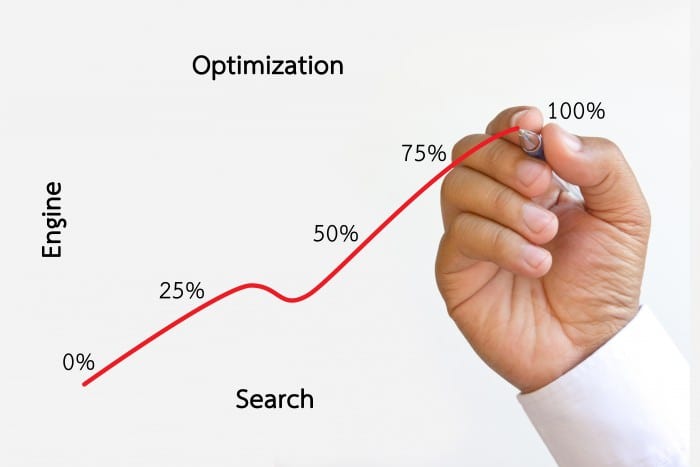Setting specific objectives that help dictate your online marketing budget
Deciding on a budgeting strategy for SEO and PPC can sometimes be tricky. There is not necessarily a one-size fits all blueprint that organizations can follow. It is oftentimes a balancing act between the organization’s long-term and short-term goals. Developing a SMART objective that can be measured is an effective technique to budget for both PPC and SEO. Once specific objectives are set, it becomes much easier to determine how much money should be allocated to each online tactic.

Managing a budget for SEO
SEO is a long-term strategy. It takes time to develop and implement an onsite/offsite SEO plan. Most good SEO firms can cost $1000-$5000 a month; even more in some cases depending on the complexity of the business. The important thing to remember with SEO is that contrary to popular belief, it is not free. It takes time and resources.

In order for your SEO plan to be successful, you must allocate resources towards it continuously. SEO doesn’t work if you’re not consistently improving your content. Paying an SEO professional a one-time fee to update your site is a wasted endeavour if there is no one to continue managing it. It can take several months before you experience any real results from SEO. That is why your budget should be based on a monthly or an annual payment plan so that you can secure regular SEO and online marketing services.
Download Expert Member resource – Marketing budget spreadsheet template
This Smart Insights budgeting spreadsheet template has been created to provide a comprehensive checklist of modern marketing activities you need to budget for including managing digital experiences (mobile and web), content marketing-led campaigns and traditional offline channels.
Access the Marketing budget spreadsheet template
Managing a budget for a Pay-Per-Click (PPC) Campaign
PPC can bring potential customers to your website almost immediately. To start, identify keywords that your customers might be using to find your product or service, bid accordingly, and they will begin to find their way to your site.
PPC can also be helpful in supporting certain areas of a website that are tough to rank for organically. The trick with paid search is to make sure the amount of money you are spending for each click aligns with your overall marketing goals. This also takes time and resources.
Identify your goals
When determining what the right SEO and PPC budget for your organization is, you must first determine what you want to achieve.
A few of the most common goals, that should be translated into SMART, quantitative objectives are:
- Increase Website Visitors
- Increase Online Contact Form Completion
- Increase Downloads of Material
- Increase Phone Calls (we live in the age of mobile)
- Increase Time Spent on the Website
- Increase Conversion Rate
In some cases, it might be a combination of any of the above goals. Identify what key performance indicators (KPIs) are. Recognize what areas need improvement and start from there.
Sometimes it’s tough to identify goals. A business may think they need to bring more visitors to the business’s website when in reality they need to improve their conversion rate. Maybe the website is getting plenty of traffic but the process for making a purchase is too difficult and is off putting to customers. Taking the time to really figure out what the main goals are will save a company time, money, and big headaches down the road.
Identified a goal? Now you can develop a budget.
If increasing traffic to your website is the main goal, the plan will be pretty straight forward. You must find a value to assign a website visitor. Look at the example below to see how this can be done.
Current average monthly website statistics:
- Avg. Website visitors: 100
- Avg. Website sales: 2
- Avg. Rev/Sale: $100
Avg. Profit margin: 40%
From the data above the website averages 2 sales out of every 100 visitors (2% conversion rate). The business grosses $200 and nets $80 after the profit margin is factored in (200*.40=80). Divide the number of overall visitors to the website by the actual profit to conclude that each visitor to the site is worth $0.80 to the business (80/100=.8). We now have the data to create a budget for both PPC and SEO.
Finding the right budget number
Knowing that each visit is worth $0.80 to the organization gives us a guideline to determine how much to spend on SEO and PPC. To increase the organization’s website traffic to 1000 visitors each month, the absolute most the organization can spend each month is $800 (assuming that conversion rate and profit margin stay the same).
Ultimately, the business would want to spend less than $0.80 per visitor in order to maintain some level of profitability. However, each business and organization is so different that this exercise is mainly meant to outline the idea of how to go about assigning value to a website visitor. Once the value is set, determine your budget.
In PPC this is simple. Any keyword that converts at 2% or less needs to have a bid that is $0.80 or lower. If a particular keyword converts at 10% than logically, the bid can be ten times higher if needed. The beauty of PPC is that you have total budget control and can really dictate how much you’re willing to spend on each keyword. Since your only paying per click, you are paying exactly what you want for each website visit. Of course there are often times other factors such as competition from other businesses and that is when an experienced PPC professional comes in handy.
SEO is a little trickier in that you are not bidding on keywords as with PPC. In SEO you are developing headings, links, and content around terms that are important to the organization. The same $0.80 value is still assigned to a visitor but the success of SEO is oftentimes measured in longer time periods such as month-over-month and even quarter-over-quarter.
Set a goal of gaining X amount of organic visitors over X amount of months and measure the effects of your strategy on a regular basis. You can then use the percentage of increased visitors multiplied by $0.80 to figure out if you’re spending the correct amount of money on SEO.
The winning budget strategy
The best PPC and SEO budgeting strategies come from those who develop goals. Use the goals to make a road map and then stick to the plan. The math is really quite simple but can be easy to overlook. Of course it all sounds easier than it really is but the main steps to follow are simple:
- Figure out what KPIs need to be improved.
- Assign value to those KPIs.
- Adjust budgets accordingly.
Once this is done, you will have a winning SEO and PPC budgeting strategy in place.

Thanks to
Andrew Rice for sharing their advice and opinions in this post. Andrew is Founder/CEO of
DigitalParc You can follow him on
Twitter or connect on
LinkedIn.






 Thanks to
Thanks to 


